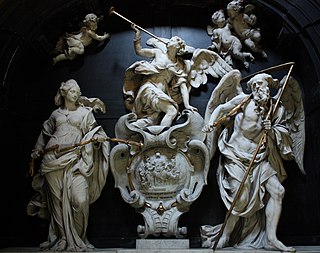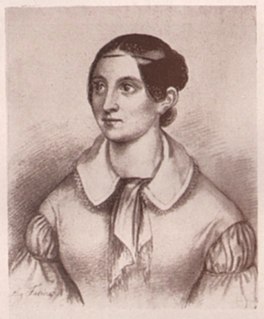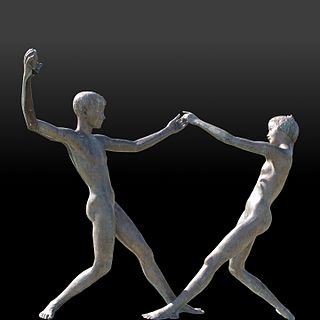 W
WA medallist or medalist is an artist who designs medals, plaquettes, badges, coins and similar small works in relief in metal. Art medals are a well-known and highly collected form of small bronze sculpture, most often in bronze, and are considered a form of exonumia. "Medalist/medallist" is confusingly the same word used in sport and other areas for the winner of a medal as an award. Medallists very often also design, or produce the dies for coins as well. In modern times medallists are mostly primarily sculptors of larger works, but in the past the number of medals and coins produced were sufficient to allow specialists who spent most of their career producing them. Medallists are also often confusingly referred to as "engravers" in reference works, referring to the "engraving" of dies, although this is often in fact not the technique used; however many also worked in engraving the technique in printmaking.
 W
WA medalist is an artist who designs medals, plaquettes, badges, coins and similar small works in relief in metal. Historically medalists were typically also involved in producing their designs, and were usually either sculptors or goldsmiths by background. In modern times medalists are mostly primarily sculptors of larger works, but in the past the number of medals and coins produced were sufficient to allow specialists who spent most of their career producing them. From the 19th century the education of a medalist often began with as an engraver, or a formal education in an academy, particularly modeling and portraiture. On coins a mark or symbol signifying the medalist as the original designer was often included in a hidden location on the coin and is not to be mistaken for the symbol of the mint master. Artistic medals and plaquettes are often signed prominently by the artist.
 W
WMattheus van Beveren was a Flemish sculptor and medalist who is mainly known for his monumental Baroque church sculptures and small wood and ivory sculptures. He also made medals and die designs for the Antwerp Mint.
 W
WJosé Miguel Blanco Gavilán was a Chilean sculptor, illustrator and writer.
 W
WHans Bolsterer, also Hans Polster or Hans Polsterer was a German sculptor, carver and medalist.
 W
WJoseph-Pierre Braemt was a Belgian medalist and coin designer.
 W
WBronisław Chromy was a Polish sculptor, medallist, painter, and draughtsman, and a professor at the Academy of Fine Arts in Cracow.
 W
WJean Dassier was a Genevan engraver and medallist.
 W
WJoachim Deschler was a German sculptor and medalist.
 W
WHeide Dobberkau was a German sculptor and medallist.
 W
WJohn Doubleday was a British craftsperson, restorer, and dealer in antiquities who was employed by the British Museum for the last 20 years of his life. He undertook several duties for the museum, not least as a witness in criminal trials, but was primarily their specialist restorer, perhaps the first person to hold the position. He is best known for his 1845 restoration of the severely-damaged Roman Portland Vase, an accomplishment that places him at the forefront of his profession at the time.
 W
WJohn Stanley Edgar was a New Zealand sculptor and medallist.
 W
WAngelica Bellonata Facius was a German sculptor, gem engraver and medallist.
 W
WChristian Fueter was a Swiss medalist and mint-master at Bern from 1792–1837.
 W
WShigeo Fukuda was a sculptor, medallist, graphic artist and poster designer who created optical illusions. His art pieces usually portray deception, such as Lunch With a Helmet On, a sculpture created entirely from forks, knives, and spoons, that casts a detailed shadow of a motorcycle.
 W
WJózef Jan Gosławski was a Polish sculptor and medallic artist. He was a designer of coins, monuments and medals. Laureate of many artistic competitions; decorated with the Silver Cross of Merit.
 W
WAnton Hám was a Slovak engraver and medallist. He was born and died in the town of Kremnica.
 W
WIon Jalea was a Romanian sculptor, medallist, titular member of the Romanian Academy.
 W
WJuozas Kalinauskas is a Lithuanian sculptor and medalist.
 W
WMilo Martin was a Swiss sculptor and medal-artist.
 W
WRuth Milles was a Swedish sculptor and writer. She is mainly known for her figurines and reliefs.
 W
WWilliam Mossop (1751–1805) was an Irish medallist and founder of the art in Ireland.
 W
WAdela Dora Ohlfsen-Bagge, known professionally as Dora Ohlfsen, was an Australian sculptor and art medallist. Working mostly in Italy, her first prominent work was a bronze medallion, The Awakening of Australian Art (1907), which won an award at the 1908 Franco-British Exhibition in London and was purchased for the Petit Palais in Paris. Other notable works include the Anzac Medal (1916), created to raise funds for Australians and New Zealanders who fought in the Gallipoli campaign, and Sacrifice (1926), the war memorial in Formia, Italy.
 W
WPhrygillus, was an ancient Greek artist, who appears to have been one of the most ancient, as well as one of the most celebrated medallists and engravers of precious stones.
 W
WBengt Richter was a Swedish medallist.
 W
WSneschana Russewa-Hoyer is a Bulgarian engraver and medallist. She lives in Berlin, Germany.
 W
WHans Jakob Stampfer was a gold smith and medalist of Zürich in the age of Bullinger . He was the son of gold smith Hans Ulrich Stampfer and of Regula Funk and learned the same trade both from his father and during journeyman years in Germany, likely Augsburg. Stampfer returned to Zürich in 1531. He is recorded as a member of the Kämbel guild in 1533, and as the guild's representative in the city council in 1544. He acted as the city's assayer from 1539. Zürich issued a thaler coin minted by Stampfer, the so-called Stampfertaler, during 1555–1560. He married Margaretha von Schönau . He was reeve of Wädenswil during 1570 to 1577.
 W
WWilliam Joseph Taylor was a British medallist and engraver who produced a wide variety of medals and tokens throughout his career, including the majority of medals and tokens produced in London, as well as a notable enterprise in Australia which attempted to establish the continent's first private mint.
 W
WAnton Vasyutinsky - Ukrainian and Russian painter, prominent designer of coins and medals in the Russian Empire and Soviet Union, professor of Imperial Academy of Arts in Saint Petersburg.
 W
WGeo (Georges) Verbanck was a Belgian sculptor and medalist.